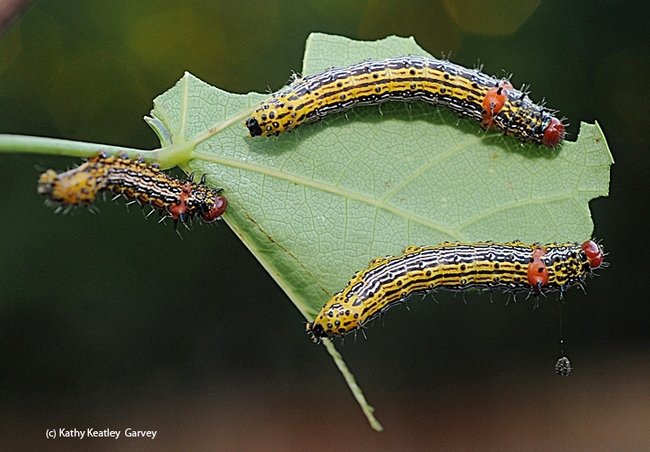- Author: Kathy Keatley Garvey
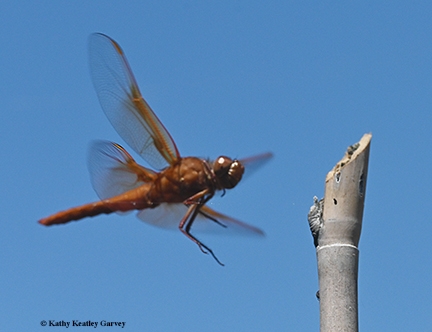
How do they do that?
“Insect wings are dynamic," postdoctoral research fellow and insect biomechanist Mary Salcedo of Virginia Tech told those at her recent UC Davis Department of Entomology and Nematology seminar. "They're living structures. They allow an insect to pollinate. They allow insects to unfurl their wing or turn on a dime to catch their prey."
Speaking on "Hydraulics in an Insect Wing: How Venation Pattern Affects Circulation," she went on to explain that insect wings are flexible, dynamic living structures that are composed of long tubular veins, and thin membrane."
"The veins act as conduits, containing hemolymph (insect blood), oxygen supply (through trachea tubes), and nerves (sensory information in flight). Wings allow an insect to perform a myriad of behaviors such as predation, migration and pollination."
Her seminar also marked the first of the department's "virtual seminars" or webinars. This change--from gathering in 122 Briggs Hall to a virtual seminar--is due to the ongoing threat of the coronavirus pandemic.
If you missed it, you can watch her seminar here.
Salcedo, a member of the Jake Socha lab, received a National Science Foundation Postdoctoral Research Fellowship to investigate fundamental insect physiology. She holds three degrees: a bachelor of science in applied and computational math sciences (2012( from the University of Washington; a bachelor of science in molecular, cellular and developmental biology (2012) from the University of Washington, and a doctorate in biomechanics, biology and applied math (2018) from Harvard.
Coordinating the seminars is community ecologist Rachel Vannette, assistant professor, UC Davis Department of Entomology and Nematology (rlvannette@ucdavis.edu). She will be providing the links the virtual seminars. (See schedule of spring seminars.)
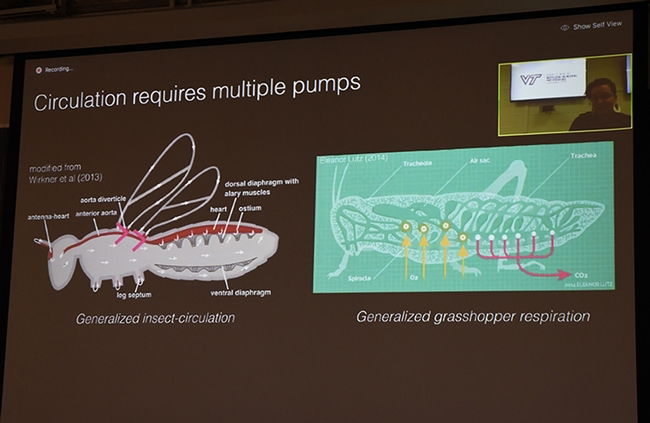
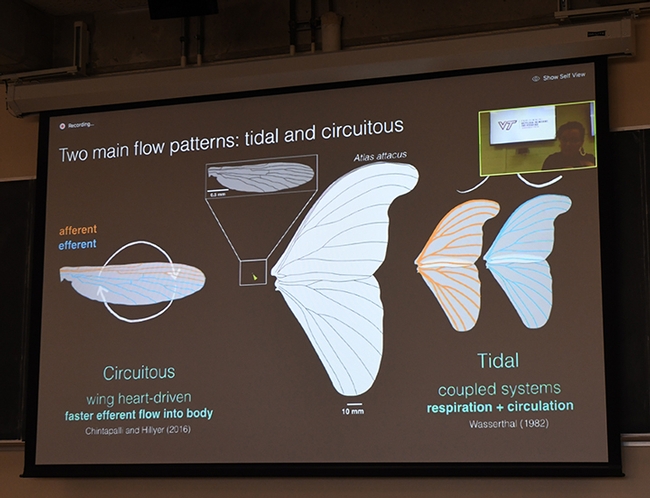
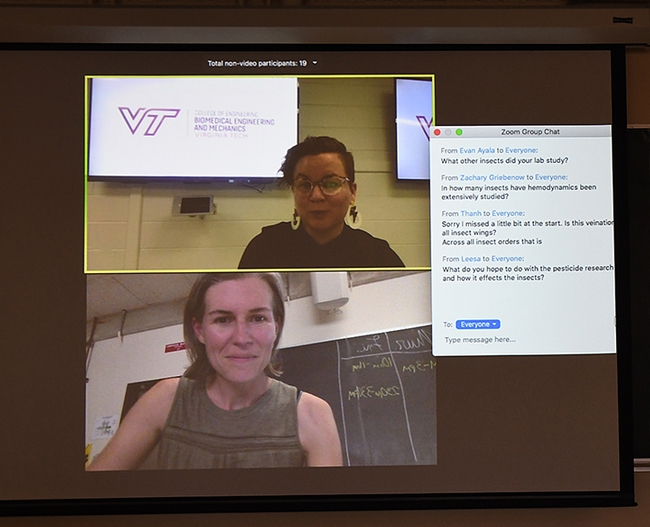
- Author: Kathy Keatley Garvey
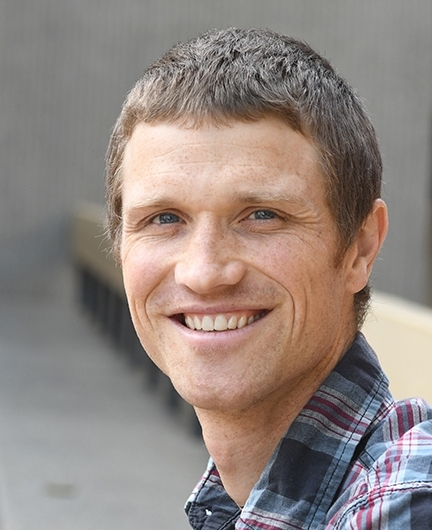
Agricultural entomologist and Cooperative Extension specialist Ian Grettenberger, who joined the faculty of the UC Davis Department of Entomology and Entomology in January 2019, targets a variety of pests, including western spotted and striped cucumber, beetles, armyworms, bagrada bugs, alfalfa weevils, aphids, and thrips
Grettenberger, who fills the vacated position of Larry Godfrey (1956-2007), received his bachelor of science degree in biology, with an ecology, evolution and organismal emphasis (honors Program) in 2009 from Western Washington University, Bellingham, Wash., and his doctorate in entomology in 2015 from Pennsylvania State University, State College, Pa. He served as a postdoctoral researcher in the Godfrey lab and later, the Frank Zalom lab, before accepting his current appointment of assistant Cooperative Extension specialist.
Grettenberger's fields of expertise include field and vegetable crops; integrated pest management; applied insect ecology, and biological control of pests.
Among his current grants:
- Protection of rice from invertebrate pests
- Management of key cotton arthropod pests with insecticides and acaricides, a proactive approach to prepare for the invasion of the tomato leafminer (Tuta absoluta) into California
- Detection, biology and control of the exotic Swede midge (Contarinia nasturtii) for California cole crops
- Management of the western spotted and striped cucumber beetle in melon production
- Biological control of the bagrada bug
- Insecticide resistant alfalfa weevils in the western United States:Quantifying the scope of resistance and implementing a plan to manage the threat
- Insecticide resistance monitoring and evaluation of efficacy of current chemical tactics for managing aphids and thrips in lettuce
How did you get interested in entomology? Can you recall an occasion that sparked your interest?
I had biologist parents, and was drawn into entomology at a pretty young age. I spent plenty of time looking in flowers and turning over logs looking for insects. Once I started thinking about going to graduate school for entomology, I decided to focus on the intersection of agricultural entomology and insect ecology. I wanted to work on applied issues in entomology.
How would you describe yourself?
I like tackling problems, which has worked out well with my work in applied entomology and extension. I can be intensely focused and immensely distracted, which I would say has its pluses and minuses.
What do you like best about your work?
I love working in applied entomology and that I get to use research to better understand pests and work to develop IPM tools. The breadth of crops I cover is both a bit overwhelming but immensely exciting because of the diversity in pest issues, types of tactics that are applicable, and interesting ecological/biological questions among the various crop pests. I also get to work with great people, both within my lab and with all of the various collaborators/cooperators. I have met and worked with a lot of fantastic people this first year, and I also think my lab is off to a great start.
Where were you born and where did you spend your childhood?
I was born in Portland, Ore., but I primarily grew up in Olympia, Wash. As you might imagine, I grew up with lots of rain, but in a beautiful area.
What are your research plans/goals here at UC Davis? What drew you to UC Davis?
Thus far, I have been focused on projects in crops where there has historically seen solid research by UC Davis (such as rice and cotton) and have been developing new projects and collaborations. For better or worse, IPM is never static, so my research will be continually evolving to address pest management needs and has already been shifting this first year. Because I have an extension appointment, stakeholder needs have driven much of my work and this will continue to be a theme.
I was drawn to Davis by the many opportunities it would afford working in agricultural entomology. The department has a great reputation academically and the people in it are great as well. I also would have (and have had) the opportunity to connect with many other great researchers in the UC system, both campus- and county-based. There are many crops and pests to work on. We are quite literally surrounded by crops I work in, including alfalfa, rice, and tomatoes. I even found some alfalfa weevil on my run last weekend.
What do you like to do in your leisure time?
My primary hobby is running, ideally on trails and long distances. I can deal with the nearly zero elevation gain in our area, but I like to get out to where there are some hills. I also like to be outdoors in general and spending time with my family (wife/dog/cat; dog will go on adventure runs with us, cat only gets the backyard).
What would people be surprised to know about you?
I don't like all foods, but I will try basically anything just to see what it tastes like. I think some people are also surprised by the amount of food I can eat at one time.
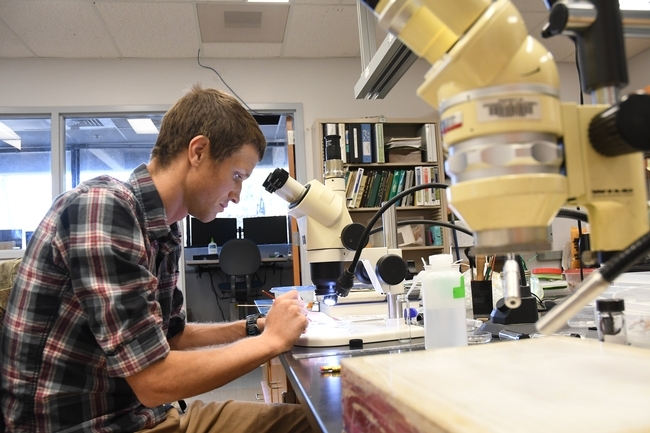

- Author: Kathy Keatley Garvey
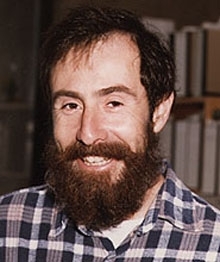
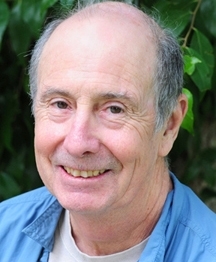
So begins Marlin Rice, author and a past president of the Entomological Society of America (ESA), in his wonderful and comprehensive piece in the current edition of ESA's American Entomologist about the legendary Bruce Hammock.
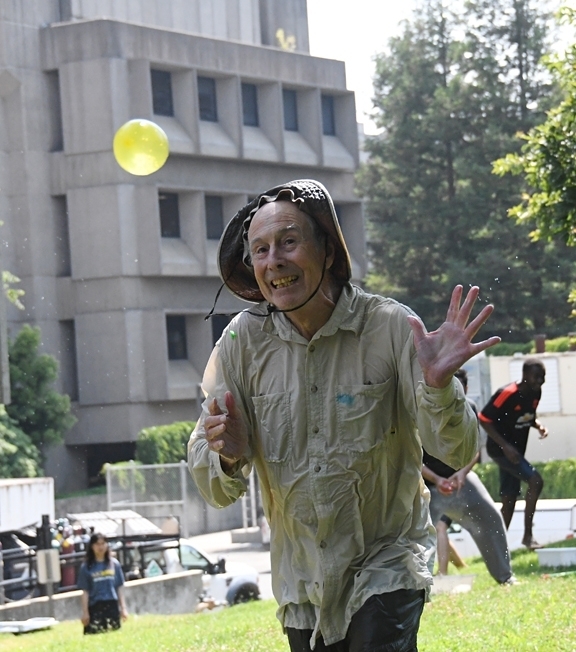
His story begins in Arkansas.
A native of Little Rock, Ark., Bruce received his bachelor's degree in entomology (with minors in zoology and chemistry) magna cum laude from Louisiana State University, Baton Rouge, in 1969. He received his doctorate in entomology-toxicology from UC Berkeley in 1973 with John Casida at UC Berkeley. Hammock served as a public health medical officer with the U.S. Army Academy of Health Science, San Antonio, and as a postdoctoral fellow at the Rockefeller Foundation, Department of Biology, Northwestern University, Evanston, Ill.
The headline says it well: "Bruce D. Hammock: Science Should Be Fun."
Hammock describes his Tom Sawyer-like childhood in Little Rock, where he wandered the woods and collected animals.
Rice asked him: "What was your favorite thing to collect?"
"I just liked interested creatures," Hammock told him. "I had a pet 'coon, pet deer, pet 'possums named Sears and Roebuck. The two 'possums had stolen some hot dogs at a Boy Scout jamboree and were trying to make their escape. This guy was going to kill them, so I took them home."
"I found Willy—his mom had been killed by hunters—in a tree stump and bottle-raised him with an old toothless bulldog, and he would ride around on her back. Raccoons and dogs are natural enemies. If an [unfamiliar] dog would growl at him, Willy would try to kill it, so he was not popular."
Young Tom went on to become an Eagle Scout and graduate from Louisiana State University. "I liked football, but I was not good at it," he recalled. "But I was upset with the football craziness in Arkansas, so I thought I could go to LSU and get away from it, but I ended up living underneath the football stadium."
In the Army, he served as a medical officer at Fort Sam, Houston, and what he saw--severely burned people in terrible pain--made a lasting impression on him. Today he's deeply involved in his research at UC Davis and the company he founded, EicOsis, in 2011 to alleviate pain in humans and companion animals.
Of EicOsis, he told Rice: "It's actually three companies: human health, equine health, and companion animal health. The human health goal is moving the drug into the clinic to treat human neuropathic pain. In dogs and cats and horses, it turns out that non-steroidals, like aspirin, are so much more toxic. If you give your dog some non-steroidals, you're saying you want your dog to be pain-free for a year, but you know you're killing it. Some non-steroidals are so toxic to non-primates that there's a real opportunity to get epoxide hydrolase to the clinic."
Excerpts from the article:
- Little did we know: While in Warsaw to attend a scientific meeting, Professor Hammock was arrested in Poland on suspicion of being a spy and spent six hours in jail.
- What does he look for in researchers hoping to join his lab? "Curiosity. And then there's this: If science is not fun, then it shouldn't be done. And if they enjoy science then they probably will be successful."
- Why did he leave UC Riverside for UC Davis? "Smog. [But] I absolutely loved Riverside. At the time, it was the largest entomology department in the world. It was just wonderful. And it was in the desert and I loved the desert. And I like rattlesnakes, and there is no shortage of rattlesnakes. They're not very pettable, but they're interesting. I've been bitten a lot of times by non-poisonous snakes. I thought I was fast, but snakes were faster. So I never kept a rattlesnake more than a few hours."
- His parents? His father was a postal worker and his mother sold World Book encyclopedias "and was convinced that if you bought World Book, you would be brilliant."
Indeed, Bruce Hammock's career is incredible--incredibly focused, superlative and kind. But he also has a finely honed sense of humor. Who else would launch an annual water balloon battle? He started it in 1980 on the Briggs Hall lawn, just outside his office. It's now called the Bruce Hammock Lab Water Balloon Battle or "Bruce's Big Balloon Battle at Briggs."
"A few years ago, we had the management officer in biochemistry upset because she thought it was unseemly for the university," Hammock told Rice. "Last year, somebody called the police on us, and the police came, and the guy took off his gun belt and joined us. [Laughs.] That was fun!"
So is science. Or it ought to be.
Some Related Links:
- Bruce Hammock and EicOsis, Innovator of the Year
- Bruce Hammock Receives $6 Million Grant
- Bruce Hammock Water Balloon Battle: 15 Minutes of Aim
- Research Could Lead to Drug to Prevent or Reduce Autism, Schizophrenia
- Hammock Lab Union Draws 100 Scientists from 10 Countries
- Bruce Hammock: Scientist Extraordinaire
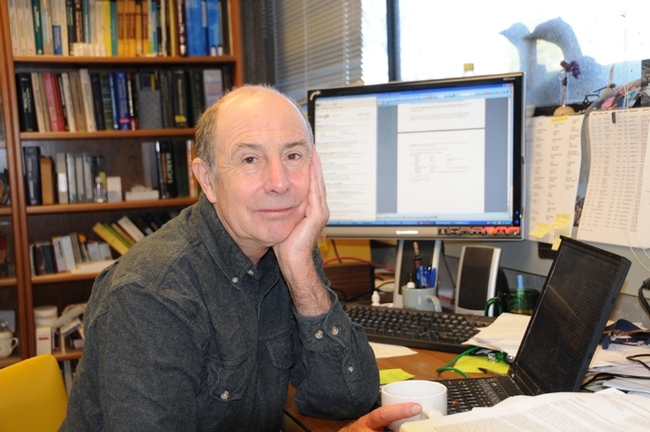
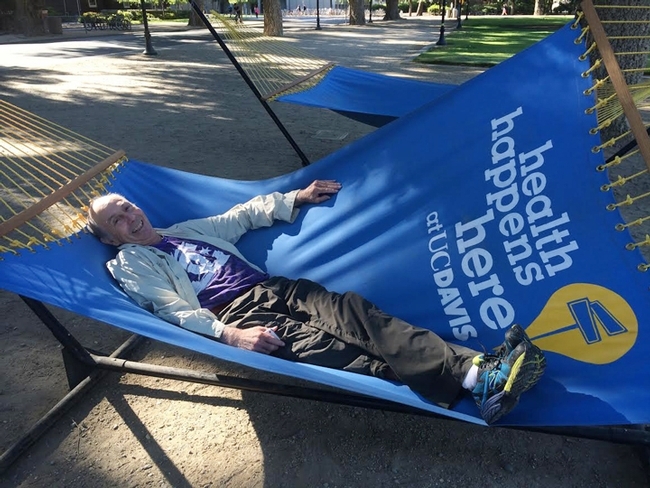
- Author: Kathy Keatley Garvey
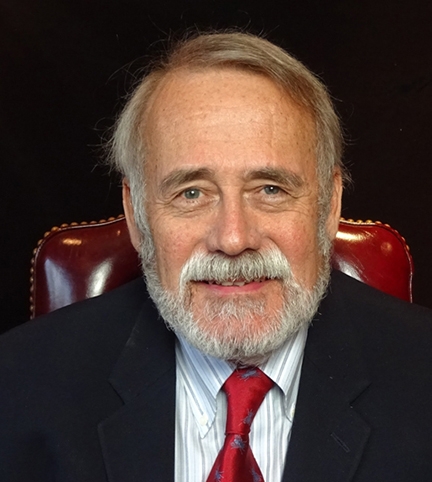
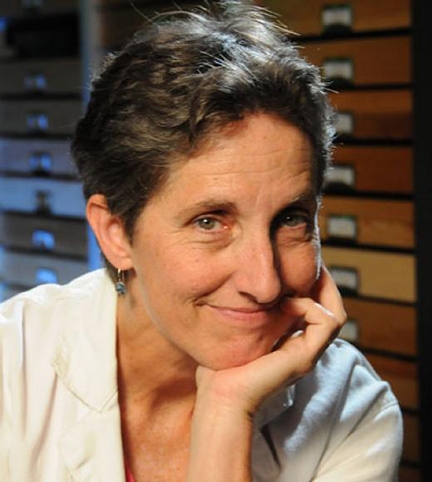
As you shelter in and look for something intriguing to do, would you to learn more about entomology, the science of insects?
The Bohart Museum of Entomology at UC Davis, home of nearly eight million insect specimens, offers a wealth of information on insects in its free fact sheets that you're welcome to peruse and download. Topics include beetles, wasps/bees, mites/ticks, ants, flies, butterflies/moths, true bugs, and non-insects (think spiders, lawn shrimps, scorpions, springtails.) The fact sheets are the work of Bohart director Lynn Kimsey, professor of entomology, UC Davis Department of Entomology and Nematology.
If you want a bug identified, you can also shoot Professor Kimsey an email at lskimsey@ucdavis.edu.
As for how to create an insect collection, the Department of Entomology and Nematology provides a great resource. Back in 2010, distinguished professor James R. Carey led a group of students in producing short, clear, concise videos on just that: how to create an insect collection. (Many high school and college teachers assign their students to collect insects, as do some youth programs that engage in entomology.)
The entire series, totaling 11 clips ranging in length from 32 seconds to 77 seconds, can be viewed in just less than 10 minutes. "So in less than 10 minutes, someone can learn how to make an insect collection,” Carey says. The clips are tightly scripted, with an emphasis on brevity, simplicity and low cost.
The project won an award from the Entomological Society of America (ESA). Carey went on to win the ESA's 2015 Distinguished Teaching Award; the "How to Make an Insect Collection" project was just one of the many factors considered.
So, how do you make an insect collection? Easy!
Here are the videos:
Part 1:
Hand Collecting (32 seconds)
Part 2:
Using an Aspirator (34 seconds)
Part 3:
Ground Collecting (54 seconds)
Part 4:
Aquatic Collecting (58 seconds)
Part 5:
Using Nets (58 seconds)
Part 6:
Killing (51 seconds)
Part 7:
Pinning (43 seconds)
Part 8:
Point Mounting (50 seconds)
Part 9:
Labeling Specimens (48 seconds)
Part 10:
Spreading (77 seconds)
Part 11:
Storage and Display (32 seconds)
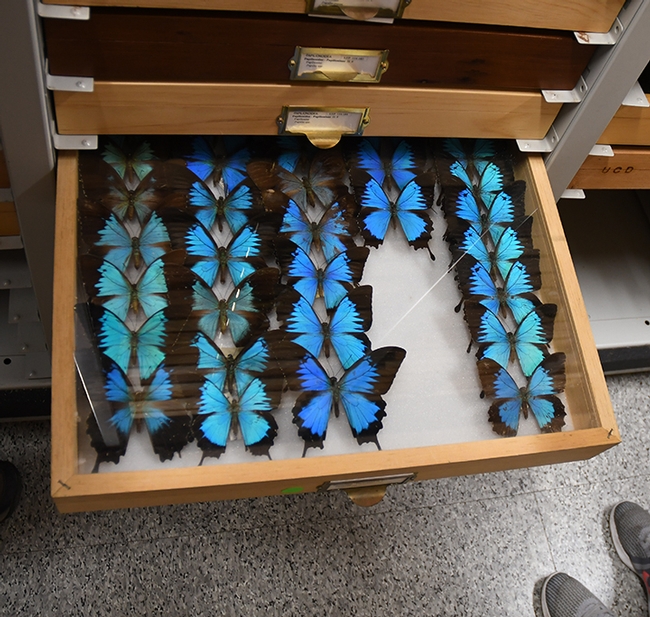
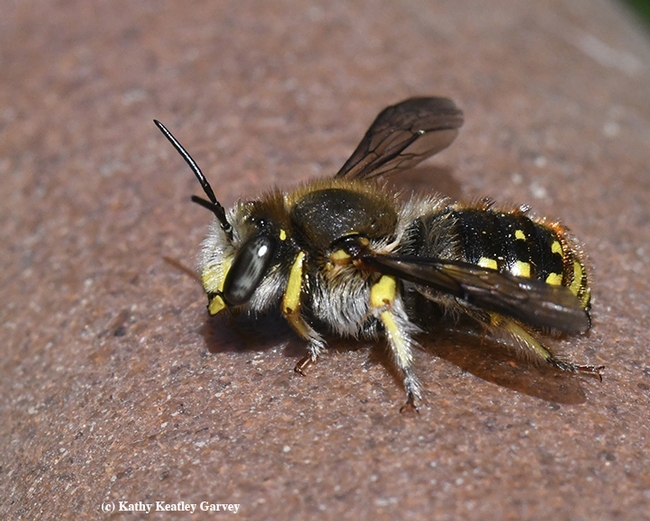
- Author: Kathy Keatley Garvey
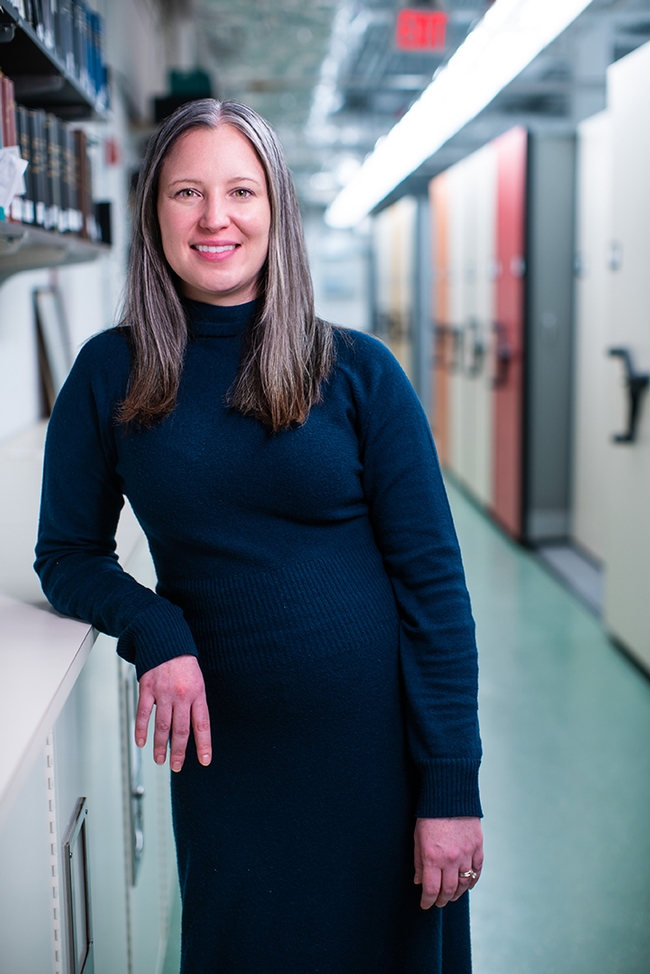
Welcome, Emily Meineke!
She joined the UC Davis Department of Entomology and Nematology as an assistant professor of urban landscape entomology on March 1. She studies how climate change and urban development affect insects, plants, and how they interact with one another.
Before accepting her UC Davis appointment, Meineke served as a National Science Foundation postdoctoral fellow at the Harvard University Herbaria, where she studied how urbanization and climate change have affected plant-insect relationships worldwide over the past 100-plus years.
A native of Greenville, N.C., Emily received her bachelor of science degree in environmental science, with a minor in biology, in 2008 from the University of North Carolina, Chapel Hill, and then went on to obtain her doctorate in entomology in 2016 from North Carolina State University. Advised by Steven Frank and co-advisor Robert Dunn, she completed her dissertation on "Understanding the Consequences of Urban Warming for Street Trees and Their Insect Pests."
Getting to know our new faculty member:
1. Please expand on the kind of research you do.
"Insects have eaten plants for around 400 million years. These interactions have given rise to most of terrestrial biodiversity. Over the past 12,000 years, humans have disrupted plant-herbivore relationships by building cities, domesticating crops, and changing the global climate."
"I investigate these disruptions, focusing on species that are of cultural importance, such as street trees, crops, crop wild relatives, and plants that support rare insect species. My work combines experiments, observations, citizen science, and biological collections to address key hypotheses in ecology."
2. What do you like best about your work?
"I love discovery, the moment when you as a scientist know something that no one else knows. I love passing that experience on to students. I also love that my work reflects my personal values. Biodiversity is critically important, and the fact that I get to study it for a living is a real privilege."
3. How did you get interested in entomology? Can you recall an occasion that sparked your interest?
"I have no idea, honestly. I never had an insect collection as a kid, and I was equally interested in all living things, from my family's pets to the toads that lived in my backyard. At some point after my undergraduate education, I realized that insects are both invisible to us most of the time and are incredibly present in our lives and imaginations. Ecologically, because they are small in size, they can seem unimportant because we are biased to think creatures our size or larger are important, but insects are really the little things that run the world."
4. How would you describe yourself?
"I'm a pretty serious person who is always working to be more light-hearted. I am both easily discouraged and tenacious. I would describe myself as creative and am drawn to diversity in all forms."
5. What drew you to UC Davis?
"When I visited, I got the feeling that UC Davis encourages creativity while valuing research that produces real solutions. When I interviewed here, I felt I would be able to be myself as a researcher and that my fellow faculty would support that. On top of that, UC Davis is such an established institution with great resources in a beautiful part of the world. I can't think of a better place to be."
6. What do you like to do in your leisure time?
"All I really ever want to do is eat and spend time with people I love. 'People' includes my two dogs, who rule the house."
9. What would people be surprised to know about you?
"I have a hidden talent. I can make very realistic cat meows. I can fool anyone's cat and most humans."
Other
In addition to her NSF Postdoctoral Research Fellowship, she received a number of other honors, including Student Appreciation for the Biology of Insect Pests Award; Garden Club of America Urban Forestry Fellowship; and the EPA Science to Achieve Results (STAR) Fellowship.
A member of the Entomological Society of America (ESA), Ecological Society of America and the Botanical Society of America, she has presented talks across the continent, as well as in Finland, Spain, Canada, France and Denmark. She delivered a presentation at the 2016 International Congress of Entomology in Orland, Fla., and at ESA's national and regional meetings.
Meineke has published her work in Ecological Monographs, Ecology and Evolution, Journal of Applied Ecology, and the Journal of Urban Ecology, among others.
The Boston Globe featured her research in a news story published Oct 11, 2018: "Rising Temperatures May Cause Insects to Eat More Plants, Harvard Study Says"
Nature journal featured her in a research highlights piece, "Warmer Forests Store Less Carbon," published Oct. 12, 2016
Los Angeles Times spotlighted her in its Oct. 6, 2016 piece, "As Cities Get Warmer, These Trees Lose Some of their Ability to Take Carbon Out of the Atmosphere."
